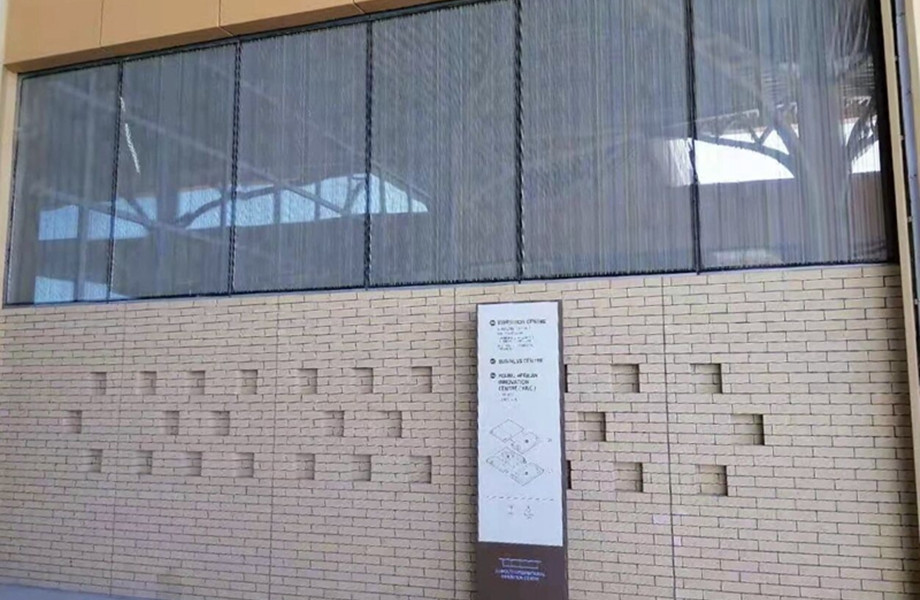Why does the glass get moldy?
In the traditional glass production process, pure alkali is generally used as the flux, and sodium oxide is present in the glass composition, so when the glass is exposed to an environment with high humidity and high temperature for a long time, the water vapor in the air will accumulate. And adsorbed on the glass surface, sodium oxide will dissolve in water to form sodium hydroxide, which is a strong alkali so that it will cause corrosion to glass.
The glass surface composition contains soluble silicate, which is dissolved or destroyed to form a silicone gel. Sodium hydroxide reacts with carbon dioxide in the air to form sodium carbonate and soluble salts. Because this substance has a relatively strong water absorption capacity, it absorbs moisture and decomposes into tiny alkaline water droplets. The concentration of these alkaline droplets changes with the surrounding temperature and humidity. If the concentrated lye is in contact with the glass for a long time, part of the gelatinous silicon oxide film will be dissolved, and the glass surface will be severely corroded. Forms unsightly spots.
.jpg)
Sodium ions in glass detach from the glass and react with air to form a white alkali-rich ion group. When water evaporates, it forms white spots or diffusion clouds, this phenomenon is the manifestation of moldy glass.
The main factors affecting glass mold formation
Glass production process
The production process of glass has a significant impact on the stability of glass, which is mainly divided into two aspects: surface structure stability and overall structure stability. The annealing process and tin bath temperature have a certain impact on the chemical stability of glass. The surface structure of glass can be improved through surface pre-treatment, which can be achieved by soaking the glass surface with the anti-mold solution or tin solution, both of which can help improve the anti mold performance of the glass.
The packaging of glass also has a certain impact on its mold resistance, so special attention should be paid to the packaging of glass. The choice of packaging materials or packaging methods is directly related to glass mildew resistance.
.jpg)
Storage environment for glass
After the glass is produced, you need to be extra cautious when storing the glass, because the outside temperature and humidity also have a great impact on the mildew of the glass.
For humid weather, glass should be fully sealed and stored to avoid long-term exposure to humid air, which can react with moisture and carbon dioxide in the air and cause mold on the glass. For dry weather, it is necessary to improve the packaging of glass to maintain sufficient breathability. It is recommended to lay some moisture-proof agents on the ground of the packaging box to absorb moisture and keep the glass in a dry environment at all times.
When storing glass, KXG often uses wooden materials. When using wooden boxes to store glass, it is necessary to fully consider the material, moisture content, and thickness of the wood. If moisture-proof and waterproof treatment is required, measures should be taken in a timely manner to avoid mildew damage to the glass during storage.
When purchasing packaging materials for glass, strict control should be exercised and quality should be well controlled. Even packaging materials that have already been purchased into the factory can undergo secondary inspections, especially in terms of material control indicators, which must be strictly followed. All glass exports from the KXG building glass factory are processed using high-quality raw materials. The wooden boxes used for packaging are made of inspection-free plywood, which is a dry wood suitable for export transportation. Moisture-proof and anti-mold agents are added to the packaging to prevent glass products from moldy during transportation.
.jpg)
In summary, with the improvement of people's quality of life, the quality requirements for glass have become increasingly high. However, China started relatively late in the field of glass mold prevention, and many mold prevention technologies are still being explored. Although it cannot fundamentally prevent glass mold, improvements can be made in the production, storage, and transportation of glass. With an understanding of the principle of mold, Targeted adjustments should be made to the production process and preservation technology of glass to minimize the moldy rate of glass as much as possible.


9826.jpg)
6514.jpg)
9597.jpg)
3609.png)
.jpg)


.jpg)
.jpg)
.png)
.png)
.png)
.jpg)
.jpg)